The 7 Most Popular Lei in Hawaii and What Makes Them Special
Posted by Maris on 9th Jan 2024
Giving or receiving a lei, an exquisite necklace made of flowers, leaves, feathers, or shells traditionally linked with the Hawaiian Islands, should not be limited to May Day. Ancient Hawaiians wore the lei, which has a rich Polynesian legacy, as adornment, a way to set oneself apart from others, and for ceremonial purposes. Tourism fueled its rapid rise in popularity; during the steamship era, lei vendors sprung up around Aloha Tower, and islanders bought and sold lei to welcome guests. It's a long-standing custom that might still exist now.
After navigating the narrow streets of Honolulu's Chinatown to visit with a few of the many lei vendors, we came across these seven exquisite lei. These are among of the most sought-after, heavenly-scented flower lei in town, despite being a little variety.
Pikake Lei
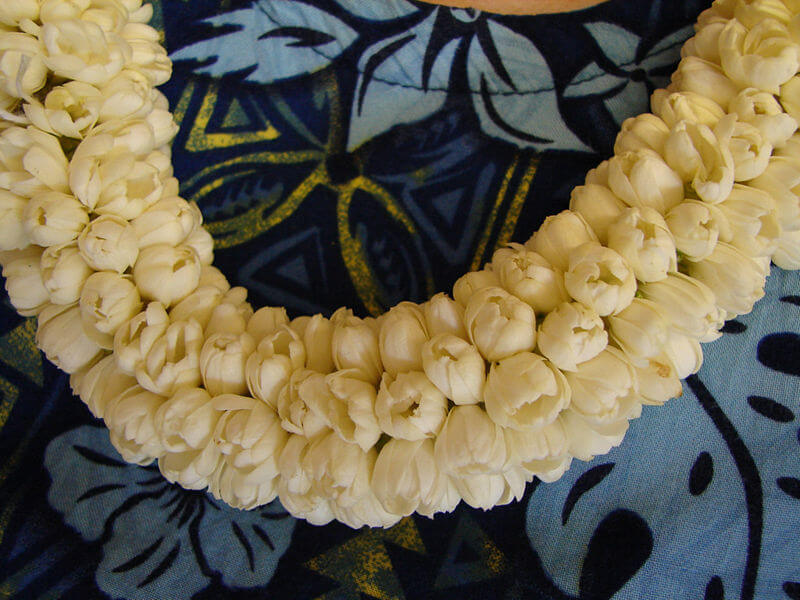
The perfume of these exquisite little fragile blossoms is so potent that you will usually be able to smell them before you see them. That shouldn't stop you from buying three, four, or five strands of this lei because it graces every wearer. Hawaii's Princess Kaiulani affectionately called these blossoms pikake (peacock), after her favorite bird, even though the rest of the world knew them as Arabian Jasmine.
Purple Orchid Lei
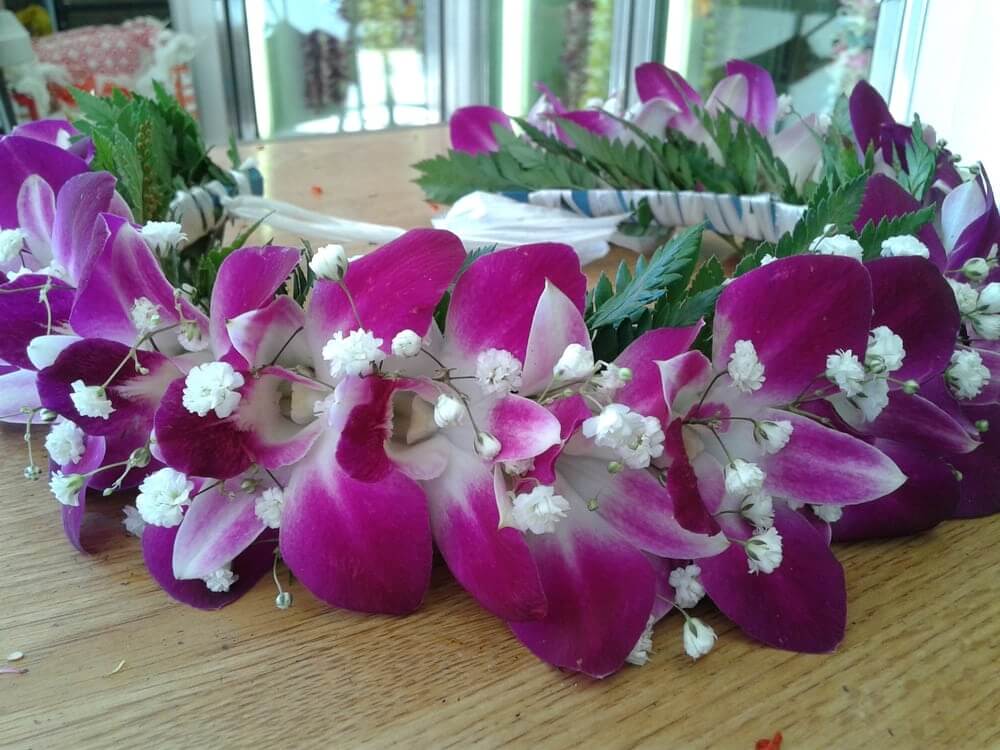
Not traditionally Hawaiian, the beautiful and colorful orchid lei is one of the most popular lei seen at luaus and airports. Because they are stronger than most other flowers, last longer, can be colored, and have no scent, this lei is truly appropriate for every event and anybody.
Tuberose and Ti Leaf Lei
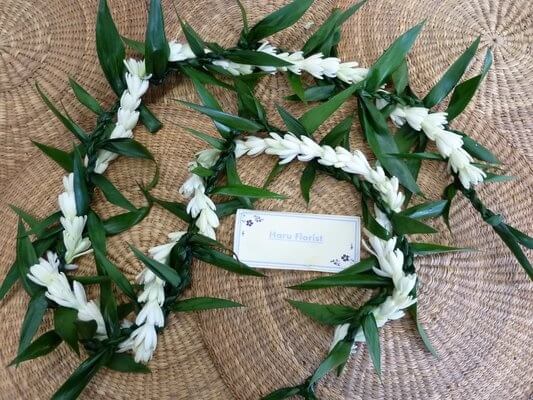
This two-stranded, open-ended lei is suitable for both men and women. Early Polynesians brought the broad-leafed ti plant with them to Hawaii when they arrived by canoe. One of Hawaii's most versatile plants, it can be used for food, clothing, housing, medicine, and other purposes. Its leaves are braided to create the ti leaf lei. Conversely, tuberose is a native of Mexico that was brought to Hawaii in modern times and has subsequently grown to be a significant part of Hawaiian culture. In its honor, songs have been written, and people frequently present lei gifts for any occasion.
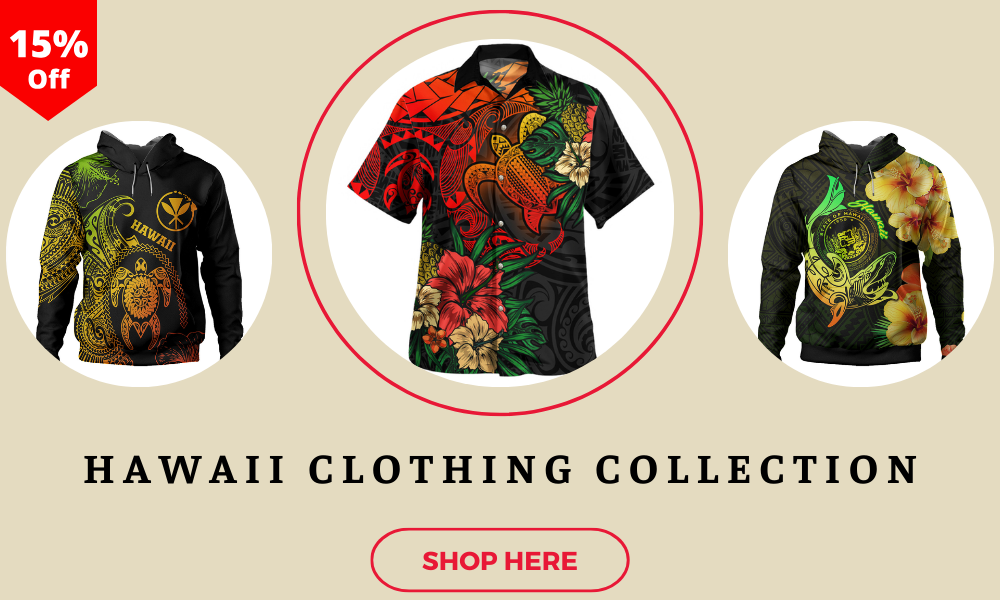
White Ginger Lei
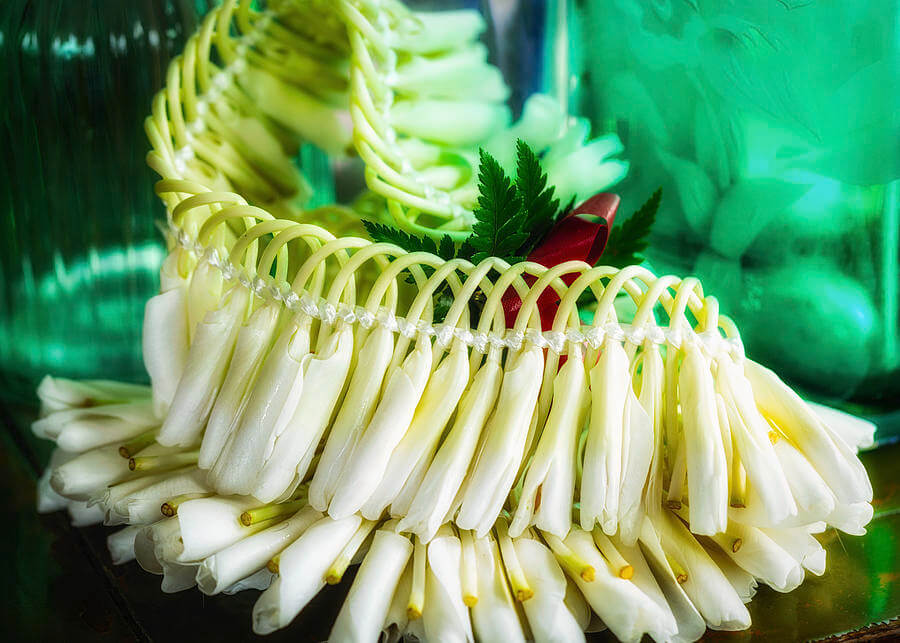
The awapuhi keokeo (white ginger) lei is a gorgeous ornament that lies flat with its petals facing outwards and emits a really pleasant perfume. It originated in India and was brought to the Hawaiian Islands by early Polynesians in boats.
Pua Kenikeni
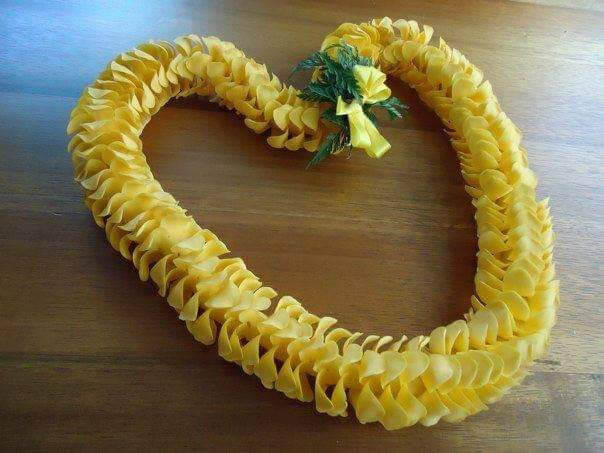
The trumpet-shaped blossom of the Pua Kenikeni tree is one of the most fragrant blooms. Known locally as pua (flower), it was brought to Hawaii in modern times and has since spread throughout the Pacific. Since each blossom was formerly sold for ten cents when it was used to make lei, it was given the name pua kenikeni ("ten-cent flower") in Hawaii.
Maile Lei
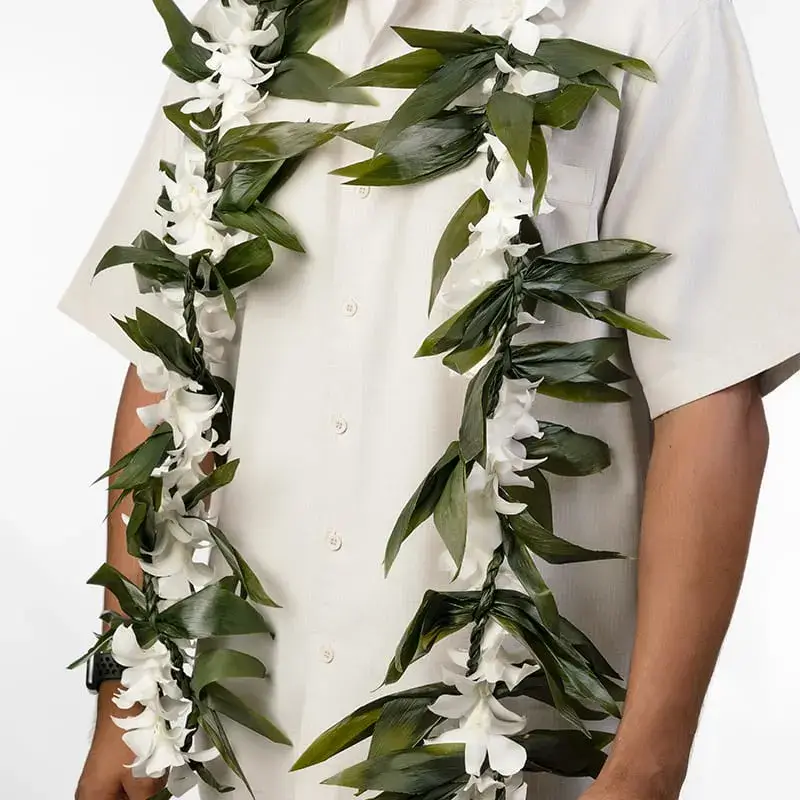
This leafy lei is made from the tendrils of the scented maile plant, the only endemic to Hawaii on this list. It is usually given out on important occasions like weddings or graduations and worn open-ended.
Hee Berry and Sea Grape
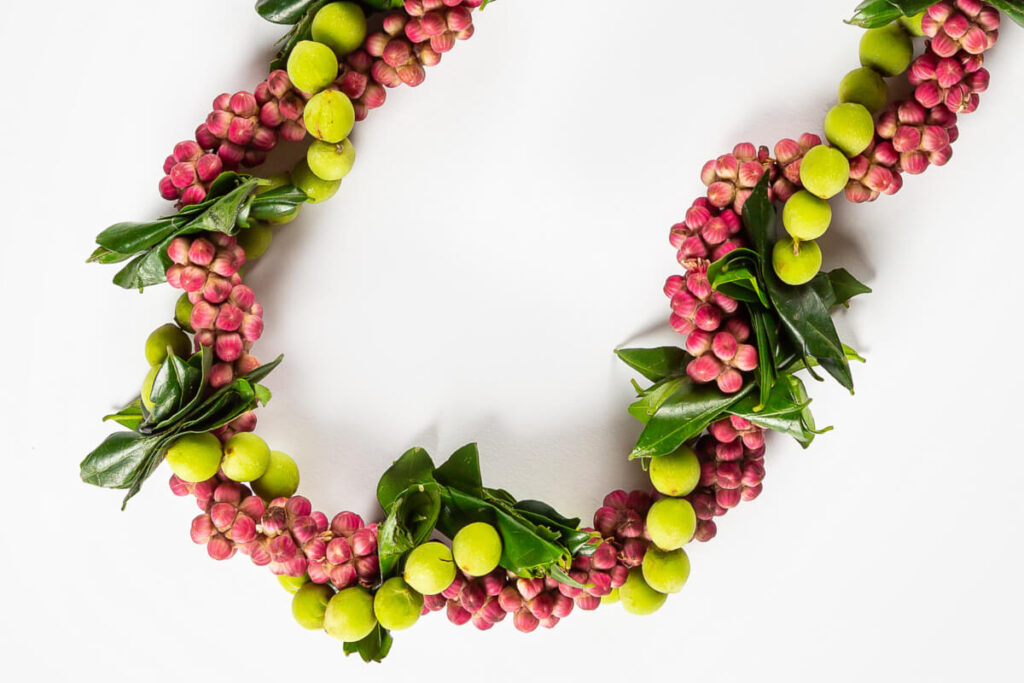
The vibrant red and green hues of the holidays are used to create this twisted lei of berries and green sea grapes. The hee berry, so called because of the long branches of the tree and the Hawaiian word for octopus, is also called the Christmas berry because of its gorgeous red color. They should not be eaten because they are common, invasive species in Hawaii, but they will live for a very long period if worn by someone who also wants a memento.

